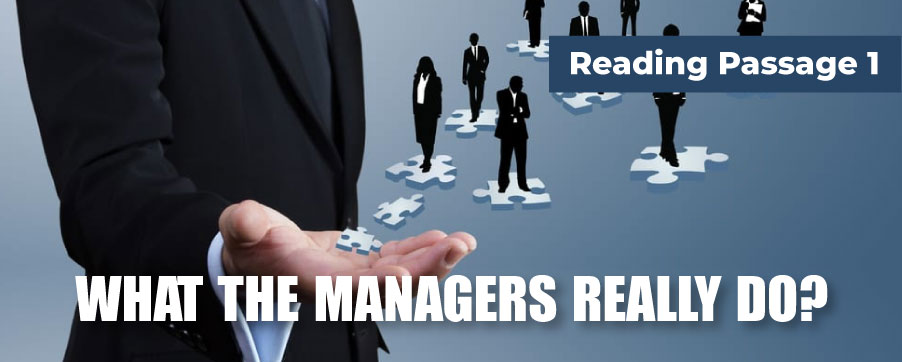
IELTS Recent Mock Tests Volume 5
- Published on: 24 Jan 2018
- Tests taken: 1,565,797
Answer Keys:
Part 1: Question 1 - 13
- 1 C
- 2 A
- 3 C
- 4 B
- 5 B
- 6 A
- 7-8 B,E
- 9 FALSE
- 10 NOT GIVEN
- 11 NOT GIVEN
- 12 FALSE
- 13 TRUE
- 1 C
- 2 A
- 3 C
- 4 B
- 5 B
- 6 A
- 7-8 B,E
- 9 FALSE
- 10 NOT GIVEN
- 11 NOT GIVEN
- 12 FALSE
- 13 TRUE
Part 2: Question 14 - 26
- 14 B
- 15 E
- 16 F
- 17 C
- 18 D
- 19 B
- 20 D
- 21 A
- 22 E
- 23 E
- 24 email voice
- 25 prefrontal cortex
- 26 group meetings
- 14 B
- 15 E
- 16 F
- 17 C
- 18 D
- 19 B
- 20 D
- 21 A
- 22 E
- 23 E
- 24 email voice
- 25 prefrontal cortex
- 26 group meetings
Part 3: Question 27 - 40
- 27 C
- 28 D
- 29 B
- 30 A
- 31 D
- 32 C
- 33 B
- 34 D
- 35 A
- 36 E
- 37 F
- 38 B
- 39 B
- 40 A
- 27 C
- 28 D
- 29 B
- 30 A
- 31 D
- 32 C
- 33 B
- 34 D
- 35 A
- 36 E
- 37 F
- 38 B
- 39 B
- 40 A
Leaderboard:
| # | User | คะแนน | เวลา | |
|---|---|---|---|---|
| Chloe Yay!! |  | 9.0 | 15:39 | |
| ( Hacker ) |  | 9.0 | 15:59 | |
| Janrey Cebrecus |  | 9.0 | 16:07 | |
| 4 | mahfuz ahmed |  | 9.0 | 16:12 |
| 5 | Ibrahima Traore |  | 9.0 | 16:18 |
| 6 | golla srujana Naidu |  | 9.0 | 16:52 |
| 7 | JOAN DANIEL CETINA GONZALEZ |  | 9.0 | 16:53 |
| 8 | thanhson0145 |  | 9.0 | 17:03 |
| 9 | 陈 蛋仔 |  | 9.0 | 17:29 |
| 10 | Nguyễn Hải Hà |  | 9.0 | 17:30 |
Review & Explanations:
Questions 1-6
Look at the following descriptions or deeds (Questions 1-6) and the list of categories below.
Match each description or deed with the correct category, A,B or C.
Write the correct letter, A, B, or C, in boxes 1-6 on your answer sheet.
NB You may use any letter more than once.
| List of Categories | |
| A | INTERPERSONAL ROLES |
| B | INFORMATIONAL ROLES |
| C | DECISIONAL ROLES |
1 the development of business scheme
2 presiding at formal events
3 using employees and funds
4 getting and passing message on to related persons
5 relating the information to employees and organisation
6 recruiting the staff
- 1 Answer: C
Keywords in Questions
Similar words in Passage
Q1. the development of business scheme
Decisional roles require managers to plan strategy and utilise resources.
Note
The keyword of Q1 is ‘business scheme’ so we look for the information in the passage. It is stated in the Introduced Category 3 that Decisional roles require managers to plan strategy and utilise resources.
For that reason, the answer is C. DECISIONAL ROLES.
- 2 Answer: A
Keywords in Questions
Similar words in Passage
Q2. presiding at formal events.
This manager may communicate future organisational goals or ethical guidelines to employees at company meetings. They also attend ribbon-cutting ceremonies, host receptions, presentations and other activities associated with the figurehead role.
Note
Q2 is about the role of managers in terms of presiding at formal events.
In the Introduced Category 1 , it is clear that managers attend ribbon-cutting ceremonies, host receptions, presentations and other activities associated with the figurehead role.
Therefore, the answer is A INTERPERSONAL ROLES.
- 3 Answer: C
Keywords in Questions
Similar words in Passage
Q3. using employees and funds
The third decisional role, that of resource allocator, involves determining which work units will get which resources. Top managers are likely to make large, overall budget decisions, while middle managers may make more specific allocations.
Note
Q3 tells us about managers organize employees and funds. According to the passage in Introduced Category 1, The third decisional role involves determining which work units will get which resources and top managers are likely to make large, overall budget decisions.
As a result, the answer is C DECISIONAL ROLES.
- 4 Answer: B
Keywords in Questions
Similar words in Passage
Q4.
getting and passing message on to related persons
Informational roles are those in which managers obtain and transmit information.
Note
Basing on Introduced Category 2:
Informational roles are those in which managers obtain and transmit information.
Consequently, the answer is B. INFORMATIONAL ROLES.
- 5 Answer: B
Keywords in Questions
Similar words in Passage
Q5. relating the information to employees and organisation
The role of disseminator requires that managers inform employees of changes that affect them and the organisation.
Note
It is clearly indicated in Introduced Category 2 that managers inform employees of changes that affect them and the organisation
For that reason, the answer is B. INFORMATIONAL ROLES.
- 6 Answer: A
Questions 7-8
Choose TWO letters, A-E.
Write the correct letters in boxes 7-8 on your answer sheet.
Which TWO positive functions about Mintzberg’s research are mentioned in the last two paragraphs?
- A
- B
- C
- D
- E
- 7-8 Answer: B,E
Tips for Q7-8:
To answer this kind of question, you need to find out 2 proper choices involving positive functions about Mintzberg’s research in the last two paragraphs . You should find the clues which can prove that this option is correct. To find the clue, you can use scanning technique. In case the keywords in the question appear too many times, you can switch to skimming, crossing out the paragraph which is not relating to the option and focus on the "potential" ones to save time and effort.
Keywords in Questions
Similar words in Passage
Q7.
provides a clear concept to define the role of a manager
The first positive function is Mintzberg provided a useful functional approach to analyse management. And he used this approach to provide a clear concept of the role of manager to the researcher.
Note
The keywords of Q7 are ‘provides a clear concept’ and ‘the role of a manager’.
Using scanning technique, we can find the information to answer Q7 at the beginning of the eighth paragraph: ’’The first positive function is Mintzberg provided a useful functional approach to analyse management. And he used this approach to provide a clear concept of the role of manager to the researcher’’.
Therefore, the answer of Q7 is B.
Q8.
Makes a fresh way for further research
The second positive function is Mintzberg’s research could be regarded as a good beginning to give a new insight to further research on this field in the future.
Note
From the passage, it is clear that the second positive function about Mintzberg’s research is giving a new insight to further research. For that reason, the answer to Q8 is E.
Questions 9-13
Do the following statements agree with the information given in Reading Passage 1?
In boxes 9-13 on you answer sheet, write
| TRUE | if the statement agrees with the information |
| FALSE | if the statement contradicts the information |
| NOT GIVEN | If there is no information on this |
9 Young professionals can easily know management experience in the workplace.
10 Mintzberg’s theory broke well-established notions about managing styles.
11 Mintzberg got a large amount of research funds for his contribution.
12 All managers do the same work.
13 Mintzberg’s theory is valuable for future studies.
- 9 Answer: FALSE
Keywords in Questions
Similar words in Passage
Q9.
Young professionals can easily know management experience in the workplace.
Young professionals start out with a plan to become senior partners, associates, or even managers of a workplace. However, these promotions can be few and far between, leaving many young professionals unfamiliar with management experience.
Note
According to the passage, promotions can be few and far between, leaving many young professionals unfamiliar with management experience. However in Q9 the keyword is ‘can easily know’. Therefore, the answer is FALSE.
- 10 Answer: NOT GIVEN
Keywords in Questions
Q10
Mintzberg’s theory broke well-established notions about managing styles.
Note
When we look through the passage, there is no information which refers to this question. For that reason, the answer is NOT GIVEN.
- 11 Answer: NOT GIVEN
Keywords in Questions
Q11
Mintzberg got a large amount of research funds for his contribution.
Note
When we look through the passage, there is no information which refers to this question. As a result, the answer is NOT GIVEN.
- 12 Answer: FALSE
Keywords in Questions
Similar words in Passage
Q12
All managers do the same work.
As many professionals already know, managing styles can be very different depending on where you work.
Note
It is clearly stated in the passage that the work of the managers are different and depends on they work. Therefore, the answer is FALSE.
- 13 Answer: TRUE
Keywords in Questions
Similar words in Passage
Q13
Mintzberg’s theory is valuable for future studies.
Mintzberg’s definitions added clarity and precision to further research on the topic.
However, even if the criticisms against Mintzberg’s work are true, it does not mean that the original research from the 1960s is completely useless. Those researchers did not say Mintzberg’s research is invalid.
Note
According to the passage, Mintzberg’s definitions help further research (future research) to be for precise. Moreover, his research was not said to be invalid in further studies. This information is the same as the idea of Q13. For that reason, the answer of Q13 is TRUE.
READING PASSAGE 1
You should spend about 20 minutes on Questions 1-13, which are based on Reading Passage 1 below.

What the Managers Really Do?
When students graduate and first enter the workforce, the most common choice is to find an entry-level position. This can be a job such as an unpaid internship, an assistant, a secretary, or a junior partner position. Traditionally, we start with simpler jobs and work our way up. Young professionals start out with a plan to become senior partners, associates, or even managers of a workplace. However, these promotions can be few and far between, leaving many young professionals unfamiliar with management experience. An important step is understanding the role and responsibilities of a person in a managing position. Managers are organisational members who are responsible for the work performance of other organisational members. Managers have formal authority to use organisational resources and to make decisions. Managers at different levels of the organisation engage in different amounts of time on the four managerial functions of planning, organising, leading, and controlling.However, as many professionals already know, managing styles can be very different depending on where you work. Some managing styles are strictly hierarchical. Other managing styles can be more casual and relaxed, where the manager may act more like a team member rather than a strict boss. Many researchers have created a more scientific approach in studying these different approaches to managing. In the 1960s, researcher Henry Mintzberg created a seminal organisational model using three categories. These categories represent three major functional approaches, which are designated as interpersonal, informational and decisional.
Introduced Category 1: INTERPERSONAL ROLES. Interpersonal roles require managers to direct and supervise employees and the organisation. The figurehead is typically a top of middle manager. This manager may communicate future organisational goals or ethical guidelines to employees at company meetings. They also attend ribbon-cutting ceremonies, host receptions, presentations and other activities associated with the figurehead role. A leader acts as an example for other employees to follow, gives commands and directions to subordinates, makes decisions, and mobilises employee support. They are also responsible for the selection and training of employees. Managers must be leaders at all levels of the organisation; often lower-level managers look to top management for this leadership example. In the role of liaison, a manager must coordinate the work of others in different work units, establish alliances between others, and work to share resources. This role is particularly critical for middle managers, who must often compete with other managers for important resources, yet must maintain successful working relationships with them for long time periods.
Introduced Category 2: INFORMATIONAL ROLES. Informational roles are those in which managers obtain and transmit information. These roles have changed dramatically as technology has improved. The monitor evaluates the performance of others and takes corrective action to improve that performance. Monitors also watch for changes in the environment and within the company that may affect individual and organisational performance. Monitoring occurs at all levels of management. The role of disseminator requires that managers inform employees of changes that affect them and the organisation. They also communicate the company’s vision and purpose.
Introduced Category 3: DECISIONAL ROLES. Decisional roles require managers to plan strategy and utilise resources. There are four specific roles that are decisional. The entrepreneur role requires the manager to assign resources to develop innovative goods and services, or to expand a business. The disturbance handler corrects unanticipated problems facing the organisation from the internal or external environment. The third decisional role, that of resource allocator, involves determining which work units will get which resources. Top managers are likely to make large, overall budget decisions, while middle managers may make more specific allocations. Finally, the negotiator works with others, such as suppliers, distributors, or labor unions, to reach agreements regarding products and services.
Although Mintzberg’s initial research in 1960s helped categorise manager approaches, Mintzberg was still concerned about research involving other roles in the workplace. Minstzberg considered expanding his research to other roles, such as the role of disseminator, figurehead, liaison and spokesperson. Each role would have different special characteristics, and a new categorisation system would have to be made for each role to understand it properly.
While Mintzberg’s initial research was helpful in starting the conversation, there has since been criticism of his methods from other researchers. Some criticisms of the work were that even though there were multiple categories, the role of manager is still more complex. There are still many manager roles that are not as traditional and are not captured in Mintzberg’s original three categories. In addition, sometimes, Mintzberg’s research was not always effective. The research, when applied to real-life situations, did not always improve the management process in real-life practice.
These two criticisms against Mintzberg’s research method raised some questions about whether or not the research was useful to how we understand “managers” in today’s world. However, even if the criticisms against Mintzberg’s work are true, it does not mean that the original research from the 1960s is completely useless. Those researchers did not say Mintzberg’s research is invalid. His research has two positive functions to the further research.
The first positive function is Mintzberg provided a useful functional approach to analyse management. And he used this approach to provide a clear concept of the role of manager to the researcher. When researching human behavior, it is important to be concise about the subject of the research. Mintzberg’s research has helped other researchers clearly define what a “manager” is, because in real-life situations, the “manager” is not always the same position title. Mintzberg’s definitions added clarity and precision to future research on the topic.
The second positive function is Mintzberg’s research could be regarded as a good beginning to give a new insight to further research on this field in the future. Scientific research is always a gradual process. Just because Mintzberg’s initial research had certain flaws, does not mean it is useless to other researchers. Researchers who are interested in studying the workplace in a systematic way have older research to look back on. A researcher doesn’t have to start from the very beginning— older research like Mintzberg’s has shown what methods work well and what methods are not as appropriate for workplace dynamics. As more young professionals enter the job market, this research will continue to study and change the way we think about the modern workplace.
IELTS Explained for Recent Mock Tests Volume 5 - Reading Test 1
Strengthen your reading skills with comprehensive instruction and explanation from our IELTS expert Jamie. In this video course, Jamie will show you the easiest and most effective ways to locate information and find the correct answers in a long reading passage.
Want to watch the rest of the class?
Purchase an All-Access Pass to get access to this premium class and 200+ more on IOT. Or start with This Single Class today






